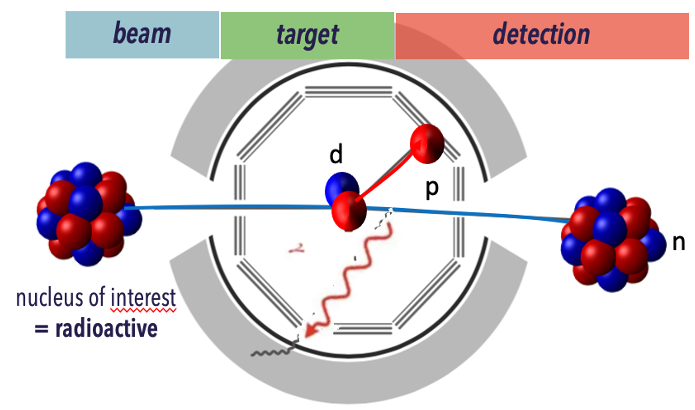The goal of ATRACT is to open new avenues for transfer reactions with radioactive beams. Transfer reaction have been performed since the 70’s in direct kinematics where the target is the nucleus of interest and the beam (light in general) is used as a probe. All light beams are available to probe neutron and proton WF as well. The powerfulness of transfer reaction is that there is very few degrees of freedom so that the models are tractable and useful spectroscopic information can be obtained to study both the single particle state and the collective properties of nuclear states.
With the advent of radioactive beams (RIB), the study of the neutron wave functions has taken off with the use of neutron addition (d,p) and neutron removal (p,d) (d,t) transfer reaction, the H isotopes being available has plastic targets (CH2, CD2). Although the C contamination produces some background and degrade the overall excitaiton energy resolution.
But the one-proton and two-proton and two-nucleon transfer reactions stayed behind due to the experimental difficulties : the (d,n) reaction (counterpart of (d,p) reaction) implies the challeging detection of neutrons and 3He target are available with very low 3He density limiting their use.
Inverse kinematics with RIBs impinging on light targets (H, He) is one of the keys to advance our understanding in nuclear structure and we propose with ATRACT to develop very thick 3He targets (1020 at/cm2).

